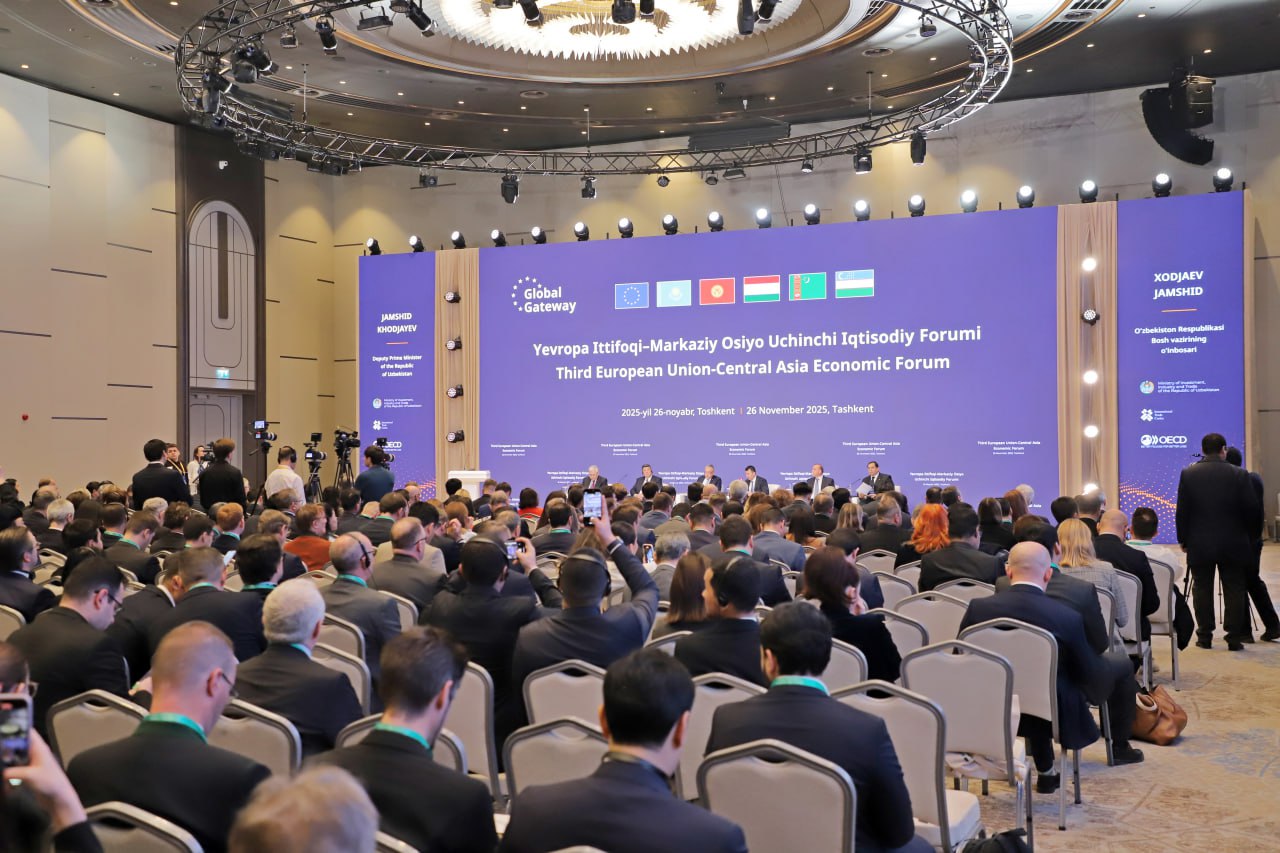BAKU, Azerbaijan, November 27. The Tashkent EU-Central Asia Economic Forum once again showed how actively Brussels is developing its ties with the region. The agreements signed, the expansion of investment programs, the focus on critical raw materials, digitalization, and energy - all of this genuinely elevates the level of cooperation. Yet behind the impressive scale of statements lies a simple but fundamentally important truth that cannot be ignored: no matter what documents the EU and Central Asia sign, most of these agreements, especially those related to supply chains, logistics, and transit, simply cannot function without Azerbaijan.
Any discussion of transport routes, critical raw material exports, energy system integration, or regional connectivity ultimately comes down to one geographic and infrastructural fact: Azerbaijan is the bridge. The only fully operational and reliable bridge between Central Asia and Europe.
The forum summed up an active year in EU-Central Asia relations, which included the Samarkand Summit, a ministerial meeting in Ashgabat, and the visit of the President of Uzbekistan to Brussels. Tashkent became the stage for wide-ranging discussions and new initiatives.
The EU emphasized the implementation of its Global Gateway strategy, moving from discussions to concrete projects. Energy, digital transformation, supply chain resilience, and, crucially, critical raw materials received the most attention.
European Commissioner for International Partnerships Jozef Síkela stated plainly: "2025 has shown how much the EU and Central Asia can achieve together. We are moving from potential to delivery - in digital communications, clean energy, and modern transport. These initiatives foster sustainable growth, strengthen resilience, and open new opportunities in both our regions". He also announced six new agreements under Global Gateway, noting that these steps would help turn the Trans-Caspian Corridor into a functioning and competitive route.
Among the initiatives, the GROW CRM program stands out - a partnership with the EBRD to develop projects in critical raw materials, prepare feasibility studies, modernize regulatory frameworks, and create new value chains. In 2024, Uzbekistan and the EU had already formalized a strategic partnership on critical raw materials and signed a roadmap. This cooperation is now moving into practical implementation.
If the EU talks about Central Asia’s raw materials, it must objectively include Azerbaijan. If the EU discusses transport corridors, Azerbaijan is inherently part of the conversation. If the EU plans to increase imports from the region, it relies on the Azerbaijani infrastructure.
Azerbaijan has firmly established itself as a regional hub. Since 2022, volumes along the Middle Corridor have grown by nearly 90%, carrying Kazakh oil and uranium, container trains from China, as well as goods from Uzbekistan and other Central Asian countries. In 2024 alone, over 11 million tons of cargo passed through Azerbaijan. The Alat International Port, the largest Caspian fleet, the Baku-Tbilisi-Kars railway, and nine international airports make the country a key artery of Eurasian transport.
The Middle Corridor has already become the main Eurasian route, resilient to geopolitical shocks. The Zangezur Corridor - TRIPP (The Trump Route for International Peace and Prosperity) - is especially significant, as it will become part of the Middle Corridor. Given that the EU views the Middle Corridor as strategically important and is already investing 10 billion euros in its development, TRIPP cannot be ignored, as it will significantly expand the capacity of the transport hub linking Central Asia to Europe.
In November 2024, at COP29 in Baku, three countries signed an agreement on the production and transfer of green energy. The project creates a new energy system spanning the region, from Kazakhstan to the Caspian and Caucasus, and directly connects it with Europe.
Uzbek President Shavkat Mirziyoyev has clearly stated that "Azerbaijan serves as a strategic bridge connecting Central Asia and Europe". That says it all.
The agreements signed in Tashkent are indeed important for modernizing governance, developing raw material industries, strengthening security, restoring ecosystems, and digital transformation. But when it comes to practical delivery of raw materials, energy, products, or equipment, all routes lead to a single logistical hub.
Without Azerbaijan, no sustainable supply model from Central Asia to Europe can be stable or economically viable. The EU can sign roadmaps with Uzbekistan, plan to expand Kazakh exports, and invest in processing projects, but the physical route is always one: across the Caspian, through Azerbaijan.
This is already proven in practice, supported by figures, projects, and political decisions. This is the logic shaping future EU cooperation with the region: for Europe, Central Asia is not just five separate countries, but a broad region that organically includes Azerbaijan. This is recognized in China and the U.S., where the region is viewed as a single entity with its key transport and energy nodes. By investing in the Trans-Caspian route and promoting Global Gateway, Brussels already acknowledges this: Azerbaijan is becoming the strategic bridge of Eurasia, without which no European initiative in the region can function.







